
Activity Reports
Supporting the recovery of the fishing industry – Oshika Peninsula
July 10, 2011
Many areas that suffered through the Great East Japan Earthquake and Tsunami, including Ishinomaki, are main fishing ports of the Sanriku area of Japan. The tsunami caused immense destruction to the fishing and seafood processing industries which make up the livelihood for a majority of the population.
In the face of having their boats and fishing areas destroyed, local fishermen and women are now facing the difficult choice of giving up their work or trying to once again continue. Upon request, Peace Boat is now undertaking efforts to help to support those who have decided to stay in the area and continue to try to fish, through helping to gather the different equipment such as nets, ropes and buoys that were dispersed and damaged by the tsunami.
This support is now being undertaken in various areas around Ishinomaki, including Ogatsu and the Oshika Peninsula. The activities featured in this report are from the fishing port of Koami Kurahama on the Oshika Peninsula.

Koami Kurihama is located in the centre of the Oshika Peninsula, around one hour by car from Ishinomaki City.
As in other tsunami affected areas, the village around the fishing port was totally destroyed by the tsunami, leaving almost nothing behind.
As it is a small village the removal of debris is not yet underway, and the level of destruction gives no indication that four months has already passed since the disaster.

Upon arrival, the volunteers are briefed by a local fisherman on the details of their activities and various points to be cautious of.
After walking 100m to the place of work in the fishing port, a massive pile of tangled rope can be seen.

This rope was salvaged by ship from the sea, and also includes much tsunami debris tangled inside.

First, a large crane is used to lightly break apart the ropes.
Once it is somewhat separated, the volunteers come into action.

The volunteers start to separate the ropes one by one – a feat much more difficult than it may sound.
To make the work even more difficult, a huge number of flies are also in this area. Many oysters, mussels and other sea creatures are also tangled up within the ropes, and so the flies are attracted by the smell and the rotting flesh.
This work is very difficult not only physically but also emotionally, however the volunteers all support each other and make great progress.
This day’s work can be incredibly repetitive – yet the number of ropes still remaining is immense. Each day a different team of volunteers works in this area, to take on the progress of the day before.






Another team is also active in the area, repairing parts of the separated ropes. As soon as they are repaired, they will be able to be used for fishing even from the following day. Thus, the activities of the volunteers is immediately and directly supporting the livelihoods of the local community – of course an enormous encouragement for the volunteers.
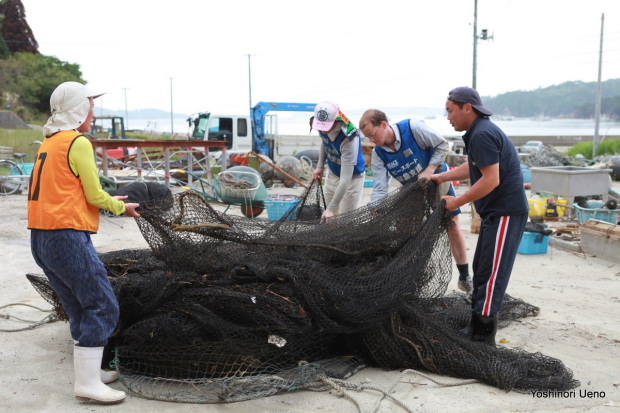

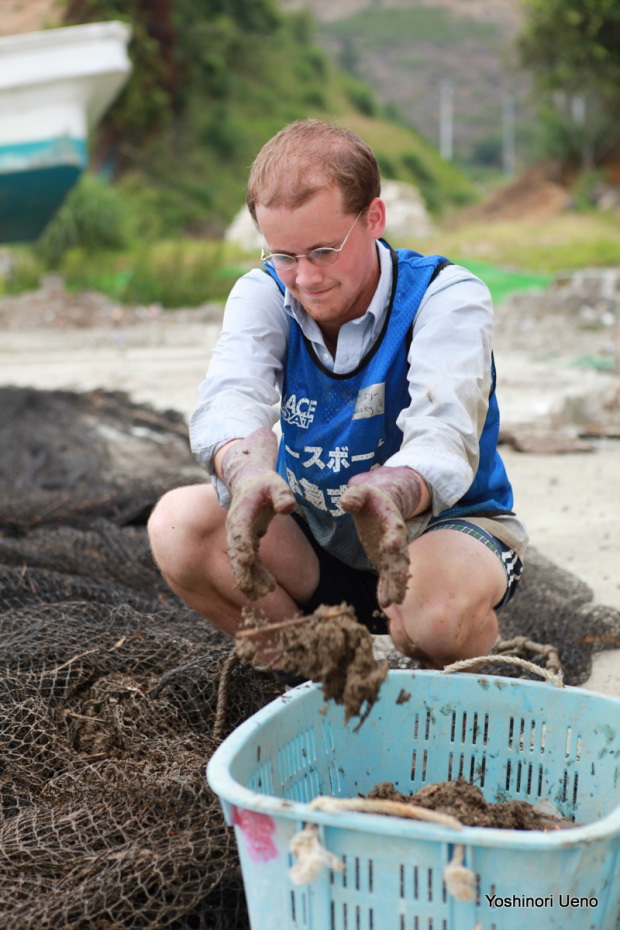
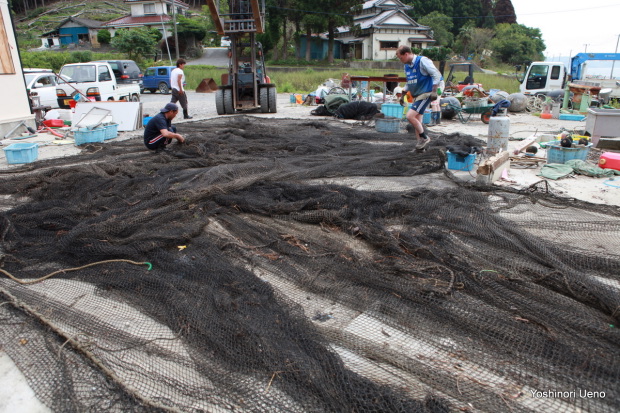
Anchors are also tangled up in amongst the ropes.

Members of the local community are also working at something next to the volunteers. This area is well known for its oysters. Around 100m for oyster farming once had 300 shelves, however the majority of these were destroyed and a mere 15 still remain. Yet some of the “seed” oysters miraculously survived. According to one of the workers, “if these had not survived, everyone would have given up. These are incredibly expensive to purchase.”
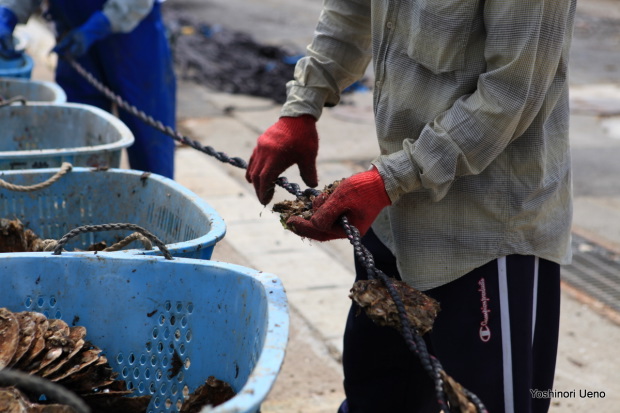
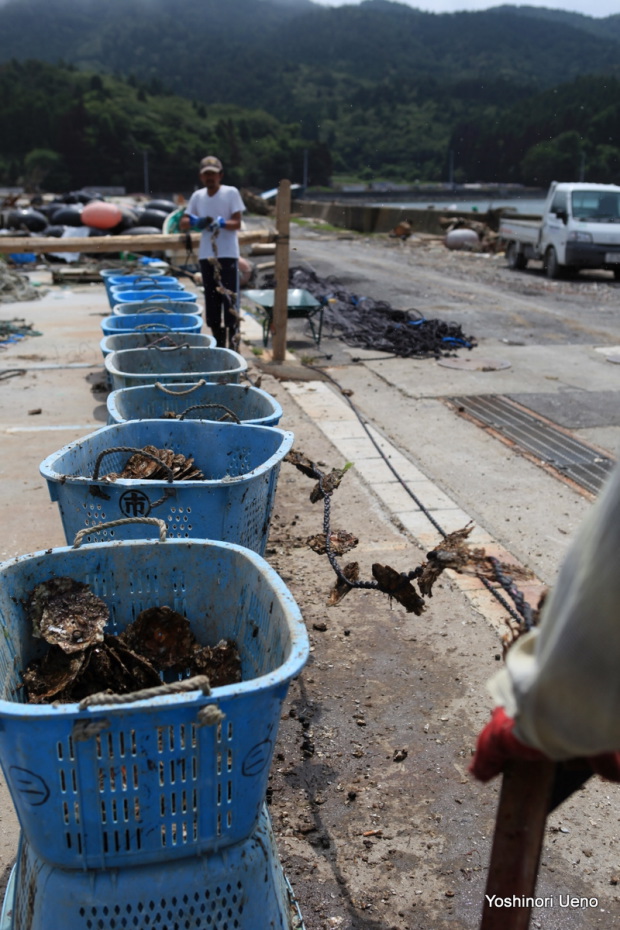
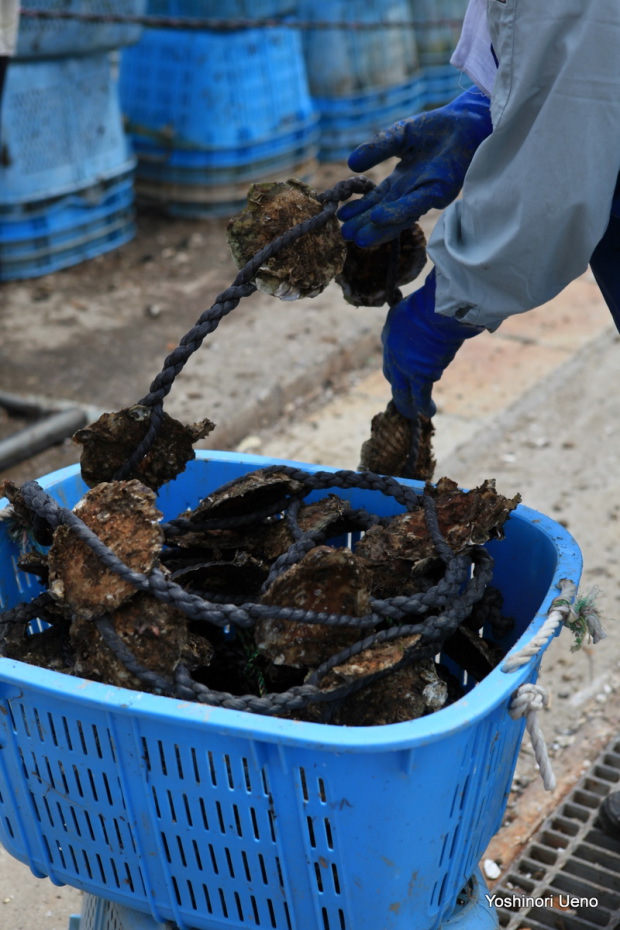
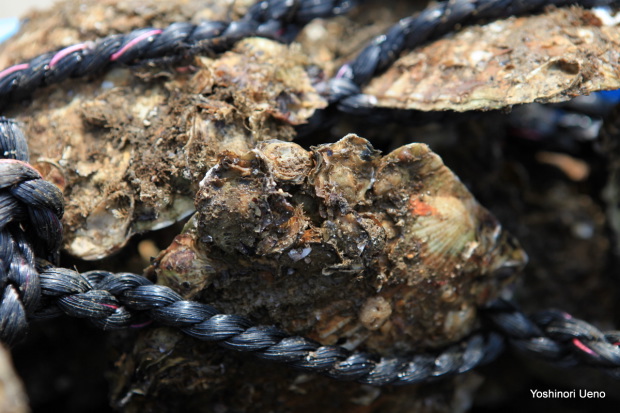
“Usually it would take around 2 years for them to be harvested, however since the number is so low, they will probably be able to take in more nutrition faster and so may grow faster. It is hard to tell, though.”

Upon hearing this, the volunteers greatly hope that these miraculous surviving seed oysters will be able to take in not only nutrition but also the passion and drive of the fishermen and women, and that one day in the near future people will once again be able to eat these oysters, the pride of the Sanriku region.

For further photos of the situation at the port of Koami Kurihama and the volunteer activities, see also here.
TAGS: cleanup • debris removal • Disaster Relief • Earthquake • fishing industry • international volunteers • Ishinomaki • Japan • Kanto-Tohoku Earthquake and Tsunami • Koami Kurayama • Oshika Peninsula • oysters • Peace Boat • port • Relief • Tsunami • Volunteer • volunteering • Volunteers


